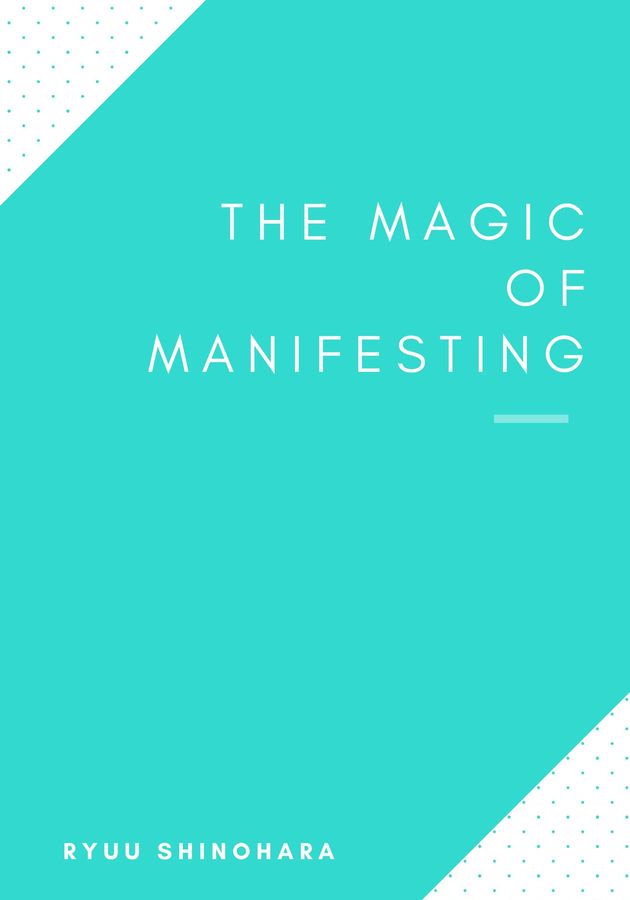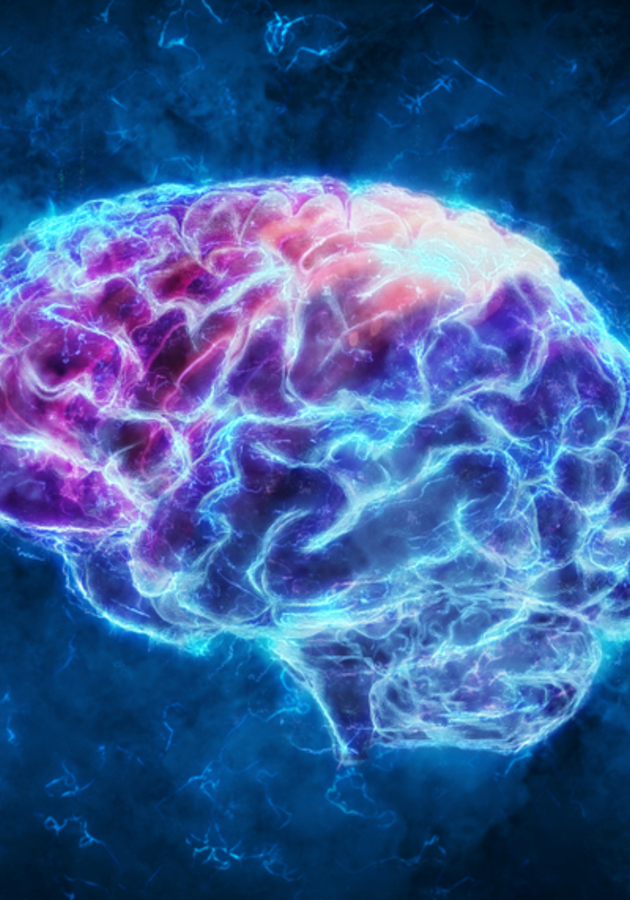Science has recently discovered that although most of the things that make up our universe seem stationary and inactive, at subatomic level, they are actually constantly in motion, vibrating, oscillating, resonating at various frequencies. Ancient spiritual teachers, through the practice of meditation, have sensed something similar to this millennia ago. Furthermore, they have also hinted at something else scientists are discovering just now, something even more interesting – namely, that when different vibrating things come together, they can often start vibrating at the same frequency.
“Thus,” comments Japanese metaphysic philosopher Ryuu Shinohara, “living the life you want is simple: simply vibrate at the energetic frequency of what you want and you will attract it into your life.” That said, the entire process of utilizing the subconscious to manifest desires has been so often misrepresented by get-rich-quick self-help authors that it is, at present, thoroughly misunderstood by the general public. It is precisely this misunderstanding Shinohara’s primer on the Law of Attraction, “The Magic of Manifesting,” tries to clear and correct. So, get ready for some basics, as well as for a few advanced law of attraction techniques!
The multifaceted reality
Reality is at once definite and temporary. Meaning, it is both absolute and relative. To understand that better, just look around you: even though you’re probably seeing smartphones, cars and computers, you’re actually seeing nothing other than sunlight reflecting from these objects and thereby giving form to them. Light, as you know full well from your early physics classes, doesn’t have a color. However, when it passes through a triangular prism, the light bends and the different colors that make up the “whiteness” of sunlight become separated. If you want, you can separate them even further by applying proper filters. Indeed, that’s why the lightbulbs in your room can emit just about any color from the rainbow spectrum to suit your liking.
Well, our lives play out pretty much the same way. As Shinohara writes, “We receive a stream of infinite possibilities from the universe and we filter it to create a reality for ourselves.” The stream of infinite possibilities we receive is called the quantum field. The quantum field is, essentially, a metaphysical realm, the record of all the infinite parallel realities that are possible. By making everyday choices, you’re actually applying a filter to this stream, the result of which is your own physical reality. Put in simpler words, you and your reality are to the quantum what a radio transmitter is to radio waves – even though there are infinite frequencies out there, you can only tune in to one at a time.
Another aspect of the quantum field is balance. Just as many factors can impair the successful transmission or reception of a radio signal, many obstacles can prevent you from “tuning in” to the reality of your choice. However, most of them boil down to one simple rule of thumb: “if you overvalue something, the exact opposite happens in order to restore you to objective reality.” In other words, if you really want that promotion at work and exaggerate its importance in your life, you’ll actually end up pushing it further away from you because you’ll be out of balance. As Shinohara says, “The importance you give something, whether excessively positive or negative, acts as a filter and propels you down your chosen branch in the infinite reality. In order to create anything in your life, a balanced intention towards that goal is required.”
Everything is connected
Choices govern every aspect of our lives. In many ways, in fact, they are our lives. That’s because choices are filters – they are what creates your reality, what tunes out all the other infinite possibilities embalmed within the quantum field. “While we do have the power of choice, choice by itself distorts our reality,” explains Shinohara. “We are capable of losing ourselves within our world of choices and exaggerating their importance. This puts us out of equilibrium since in such a reality, we fail to recognize the truth that everything is one and everything is interconnected.” Since oneness exists beyond the realm of reason, it cannot be measured or quantified – it can only be experienced by way of our soul.
The soul is the only part of us that can communicate with the stream of infinite possibilities. In fact, it’s not an exaggeration to say that the soul is the purest expression of metaphysical oneness in our physical reality. You can choose to ignore its interconnectedness to everything, but that way you’ll only expose yourself to the equilibrium forces of the universe which will push you along a path of their choice, different from the one you might have hoped for. Alternatively, you can choose to listen to your soul and thereby maintain the balance necessary to remain on the path of your choice. But how would you know when your soul is talking to you? That’s easy – you just have to listen to your sixth sense – your intuition, your innermost emotions.
Only emotions are capable of transmitting energy into the quantum field, hence only they can manifest your meta-realities into the physical reality around you. So, it’s important to let your choices be guided by positive emotions, grounded in the present moment but with one eye firmly set on the desirable future. Don’t just surrender to chance – you need to be active as well! “Accepting reality is misunderstood as simply going with the flow, but this isn't the truth,” writes Shinohara. “The true way to live is to simply go towards what you want, consciously, while accepting the reality of what is around you. It is expressing your intention to bring something into your life and communicating this to your soul, recognizing that all obstacles exist.”
Unlocking the Now
The reason why it took scientists so long to understand that, at quantum level, the seemingly immutable laws of physics don’t work at all is that they have a propensity to solve problems by way of models. A model, in Shinohara’s definition, is “an idealized situation that ignores certain real-world technicalities in order to arrive at a passable solution.” In most cases, this approach is the best one. There’s no point in taking into consideration every single factor if you want to solve a problem at hand, because that would be wasteful – there are just too many factors and you’ll never start solving anything. Simply put, to build a pyramid all you need are a few tools that work and just as many equations. You don’t need to know, for example, that the Pythagorean Theorem is merely a special case of the law of cosines.
The problem with this kind of thinking is that, as time passes, we tend to forget that our model solution is just that – a solution derived from a model. In other words, we tend to forget that model solutions have built-in weaknesses because they haven’t taken into consideration all the factors by design. To make matters worse, all it takes for a mistake to multiply is to be left ignored. Case in point, physicists spent hundreds of years solving all the wrong equations regarding the subject of time before Albert Einstein demonstrated, in 1905, that their fundamental model was wrong and that time and space weren’t linear and absolute, but warped and relative. Since Einstein, we can differentiate between two types of time: clock time and psychological time.
Clock time is precisely what you think it is – “a mechanical thing that we use to divide our day into manageable pieces and use to be productive.” Psychological time, however, is something else entirely – it’s a fluid and nonlinear phenomenon that can transport you to the past or the future regardless of your current surroundings. Whereas clock time is the ego’s tamer, psychological time is the ego’s greatest fuel source. That’s because it takes us away from the present moment, telling us subtly that the Now is not good enough for us. You can’t reject the present moment bodily; you can, however, psychologically. But it is precisely that discrepancy that makes you unhappy. Happiness – and this is very important to remember – is a component part only of the present moment; simply put, it doesn’t really exist in the realms of the physiological time.
A few techniques to live in the now
The reason why most people fail to live authentically is that they spend most of their lives stuck in the realms of psychological time, that is to say in the past or the future. Fortunately, there are many techniques one can use to loosen the grip of psychological time (and thereby, the ego) over their life, and live fully in the present moment. Here are the three most effective:
- Sticky thoughts. Each one of your thoughts has a sticky quality to it. Meaning, once it appears, it can potentially perpetuate itself to the point of being difficult to snap out of it. Use this to your advantage. Think happy thoughts.
- Observing the ego. The first step toward neutralizing something is observing it. That’s why the objective of all spiritual practices, from mindfulness to meditation, is turning inwardly, away from yourself. The best way to tune in to your soul’s frequency is by tuning out of your thoughts.
- Use clock time. Psychological time isn’t practical; clock time, on the other hand, has immense power in helping you become productive. That’s what schedules are for. Use them. Build a work structure that will help you achieve your goals. As Shinohara writes, “that’s the originally intended use of time, after all.”
Though the above three techniques should definitely help you live in the present moment more, they are by no means enough. So, combine them with the following three, meant primarily to align you with your manifestations:
- Become present with your emotions. “In the end,” sang the Beatles, “the love you take is equal to the love you make.” Indeed, if you only expect to get things in life, you’ll probably lose even the ones you have. It is only by giving that you can get in touch with your emotions and emit positive energy to the quantum field.
- Be receptive. As Einstein once remarked, “There are two ways to live your life. One is though nothing is a miracle. The other is as though everything is a miracle.” Indeed, we’re surrounded by miracles all the time, but we’re too closed-minded and egoistic to cherish them. So, open yourself up to the world. Engage with your surroundings in a more compassionate way. As you keep focus on what is truly important, the miracles will start appearing.
- Detaching from conditioning. Even the most open-minded people you know are at least to some measure conditioned to think in certain ways by their parents, religion, school or society. So, start questioning everything, especially those set of norms you are forced to follow. We are all playing roles; freedom starts once we recognize this fact.
A few more advanced techniques to attract your best life
To synchronize your heart and your mind, to get out of your own way and become fully alive by creating your best life, try the following few advanced techniques:
- Listen to your intuition. The best way of enhancing your ability to be intuitive is to pay attention to your gut – literally. Also, make every effort to listen to your dreams, and record them as soon as you wake up.
- Set your goals with ikigai. Ikigai is a Japanese concept similar to what we in the West call raison d'être – a reason for living, a sense of purpose. Your ikigai lies at the intersection of the following four elements: your passion, your profession, your vocation and your mission. Identify them – and you’ll find your ikigai.
- Detach and observe. The best way of tapping into your subconscious mind is by detaching yourself from your ego. The best way to do this – is meditation. Combine it with mindfulness to get the best results.
- Enter the flow state. The flow state is a mental state of total immersive focus. Creating a distraction-free environment is the first step toward reaching the flow state. The second one is resisting the temptation to complicate things. So, pick simple and obvious plans – and give in yourself to them!
- Yield to simplicity. It is our conscious mind that likes complexity. Our soul, on the other hand, likes simple and clear things. So, whenever faced with an option, choose the path of least resistance. You don’t want to have against you such a fearsome enemy as the entire universe!
- Set intentions to water. According to Japanese author Masaru Emoto, human consciousness can affect the molecular structure of water. The fact that we’re 70% water, makes this a powerful technique to communicate with the quantum realm. Try to energize the water you’re drinking by repeating your intentions loud and clear every time you hold a glass. You can also visualize yourself carrying out your intention. Thereby, you’ll build the positive energy necessary to change the molecular structure of the water within you.
- Set intentions to statements. Turn your intentions into affirmations. Write them in first person, using present tense. Avoid words such as “try,” “but” and “or,” and try to use phrases such as “I am willing” and “I am ready.” Do this, and over time you’ll find that your brain will adjust to this kind of thinking, automatically eliminating all that negative talk that hinders your growth.
- The Assemblage Point exercise. The Assemblage Point exercise is a good way to experience the interconnectedness of everything. This is how it goes. Stand in a relaxed manner and take a few deep breaths. Now, visualize a golden stream of energy entering you from your feet through your spine and all the way to your head. Try to synchronize your breath with the entry. In time, you’ll start feeling your skin expanding with every intake of your breath. You’ll also start feeling protected and embraced.
- Meditation and visualization with emotion. The final technique to attract your best life is actually a combination of a few already mentioned techniques. Set aside time for this kind of exercise. Because only by aligning your visualizations to your purpose and your emotions through meditation, can you bring them into reality!
Final notes
Despite its misleading subtitle, “The Magic of Manifesting” is much less a book that introduces some original and practical manifestation techniques than it is an engaging theoretical examination of the nature of reality and the reasons why the Law of Attraction might work. True, it’s only the first book in a series of books, but it should have been a bit more developed. This way, it reads as an introduction to something other than itself – which, in many ways, it is. An interesting and easy read, but all the techniques it covers – meditation, mindfulness, ikigai, visualizations, affirmations – are pretty common and far from advanced.
12min tip
Try to discover your ikigai, your purpose. Find it at the intersection of what you love, what you are good at, what the world needs, and what you can be paid for.





























